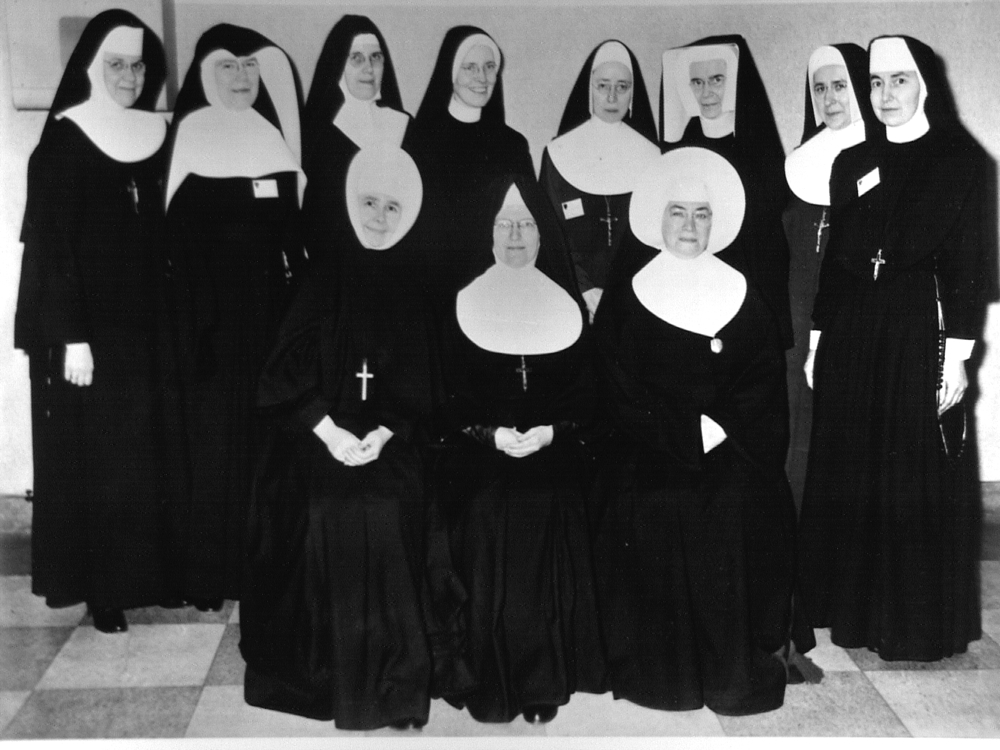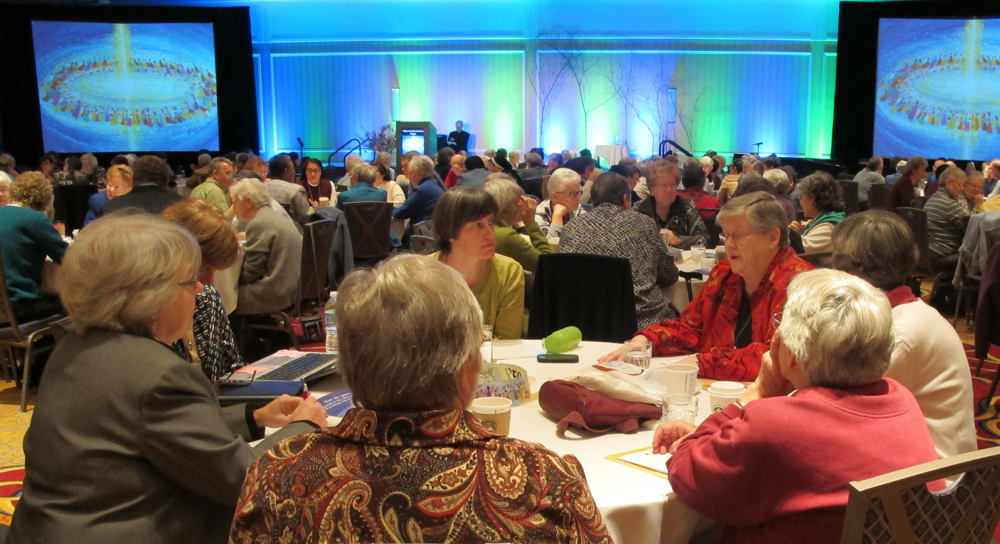The Sister Formation Movement impacts SDS
Reflection and growth were two ideals in the hearts and minds of some 2,000 sisters, priests and brothers who represented 400 religious institutions at the 1952 Congress for Religious at Notre Dame University. Six Sisters of the Divine Savior were among them.
Mother Olympia Heuel, SDS encouraged their participation, writing from Rome, “I am glad you plan attendance at the very important Religious Congress at Notre Dame. We would have liked to attend the Congress for Religious here last year; however, it was determined that this privilege would be reserved for men only—Priests and Brothers. The Sisters were counseled to pray for the success of their deliberations. Now I am pleased that in the good ol’ U.S.A. no discrimination as to sex is being made.”
The Religious Congress was the wish of Pope Pius XII, and its agenda included religious training and adapting to a growing, modernizing world. A meeting of this scale was largely unprecedented, especially prior to the Second Vatican Council in 1962.

Inspired by this August gathering, Catholic Sisters from around the world resolved to expand and improve education for their members in training. Within a year, the Sister Formation Movement was born.
While the Congress for Religious sparked this movement, it was also a response to the critical shortage of sisters within the classroom. It’s important to note that this shortage was not an issue of declining numbers. In fact, from 1949-59, the number of sisters teaching in the U.S. grew from 141,606 to 164,606. The reality is, that increase could hardly keep pace with the growing number of “Baby Boomers” enrolling in Catholic schools within the same 10-year period. Their numbers nearly doubled, from 4.5 to 8.5 million. This crisis in Catholic schools reflected an overall shortage of teachers plaguing elementary and high schools across the country. As is the Salvatorian way, the sisters went where they were needed.
Meanwhile, the Sister Formation Movement strengthened training for new sisters. It also challenged orders of women religious to focus on the whole person, moving beyond just technical training as in years past.
“… Spiritual, intellectual, and professional training cannot be separated or compartmentalized,” wrote Sister Mary Emil, IHM, a leading U.S. education researcher. Instead, these aspects of training should effectively strengthen one another, creating what Sr. Emil called the “integrated forming of a whole personality.”
Mirroring the unity of the 1952 Congress for the Religious, the Sister Formation Movement brought together sisters from countless different orders. Rather than thinking in terms of individual orders, provinces or schools, Sr. Emil writes that the sisters came “to think in terms of all the Sisterhoods.”
This progress did not go unnoticed. Monsignor Frederick Hochwalt, then executive secretary of the National Catholic Education Association (NCEA), called the Sister Formation Movement “the most significant movement in Catholic education today.”
Reverend John Flanagan, S.J., echoed that sentiment. As executive director of the Catholic Hospital Association, he called the Sister Formation Movement “a God-given instrument in these our days to help us solve our problems.”

Despite name changes to Religious Formation Movement in the mid-’70s and later to Religious Formation Conference, Catholic Sisters remain committed to education of the whole person.
Our 125 Year Celebration
As we look back on our 125th anniversary of coming to the USA, we invite you to reminisce with us. We've launched all 5 time lines with historical milestones and stories that bring to life the experiences of our sisters who came before us.
Era 1: 1895-1920
Responding to Immigrant Needs
The missionary response of hearty immigrant women religious characterizes the first 25 years of Salvatorian Sisters’ presence in the United States ...
Era 2: 1920-1950
Expanding in an “American” Church
By 1920, life for a Salvatorian Sister in the USA was radically different than it had been 25 years earlier. World War I ....
Era 3: 1950-1970
Embracing Renewal
Bob Dylan’s 1964 classic, The Times They Are A Changing, captures the high energy of this era. Change was afoot both outside and inside the Salvatorian convent walls...
Era 4: 1970-2000
Building Collaboration
Events of the mid-1960s renewed the collaborative energy that had always characterized Salvatorian life. Cloistered living ...
Era 5: 2000-2020
Searching for New Footing in a Changing World
When the new millennium arrived on January 1, 2000, Salvatorian Sisters were already five years into our second century on USA soil. Our ...
